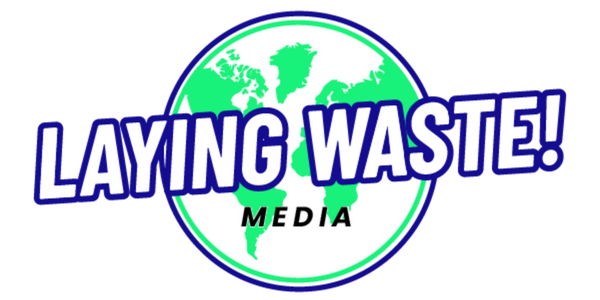AI on the Fast Track: How to Harness its Power and Navigate its Pitfalls

Like expertly tuning a race car for optimal performance, mastering the use of generative AI tools like ChatGPT for your business requires a keen understanding of its capabilities and limitations.
If you're like 99% of people who have been watching AI tools like ChatGPT flex their superpowers, you might be wondering if your job or business is next in line for an AI overhaul, or if you're potentially missing out on the considerable benefits AI can bring to your operations. We get it. The rapid progress of AI in the mainstream can feel overwhelming, even intimidating.
While it might seem like AI is a recent development, the truth is it's been in the making for decades. As early as 1955, Allen Newell and Herbert A. Simon created the "Logic Theorist," often considered the first artificial intelligence program designed to mimic human problem-solving skills.
Today, with generative AI starting to hit the mainstream, Governments worldwide are putting it at the top of their agendas alongside environmental and sustainability targets.
AI is even considered a 'Critical Technology' by the current Australian Government in their recent Critical Technologies Statement, which focuses on how Australia can harness the positive economic and social opportunities it offers while balancing the ethical implications and risks.
In the context of Australia's commitment to Net Zero targets, we envision a future where businesses in sustainability, climate tech, and waste management have AI as part of their tech stack to supercharge productivity, optimise resources, and drive innovation.

Believe it or not, we're not quite living in a 'Terminator' movie scenario. While AI has certainly come a long way since the "Logic Theorist", we're still far from a world where AI outpaces human capability across all fields.
Generative AI like ChatGPT and Google Bard, in its current state, is a tool. A powerful and versatile one, at that but it's still a tool.
It's an opportunity for us to turbocharge our learning and productivity. Think of it as sitting in the driver's seat of a race car. We're still firmly in control, steering and accelerating, but AI is the high-performance vehicle that enables us to reach our goals at unparalleled speeds.
Understanding the strengths and weaknesses of AI tools like ChatGPT and Google Bard is the first step in that process.
So, let's dive in and unravel the three key pros and cons of generative AI tools.
The first advantage of AI is its non-human nature. AI doesn't get tired or need a lunch break.
It can synthesise information from various sources and provide an answer to your questions, analyse your data and action tasks, around the clock, 365 days of the year.
The speed and endurance of AI can be incredibly beneficial for tasks requiring monitoring, a quick turnaround or extensive data analysis.
However, the non-human aspect of AI is also its first disadvantage. It's difficult for AI to distinguish between fact and fiction.
AI does not currently have the awareness to self-correct or fact check itself. When it gets something wrong, it's known as a 'Hallucination'.
And whilst it's true that both humans and AI systems can make errors, the nature of how we as humans make mistakes are quite different.
There are usually checks and balances in place throughout a business process whether it is manually checking the sources of a news article or physically checking a door is locked.
With AI, being so new, these checks and balances need to be created.
Generative AI can make mistakes because of issues in programming, because of biased data or because it's looking at scenarios that fall outside the dates of the library of information it has access to (also known as training data).
AI operates on a limited set of data and training information from a fixed time period.
Generative AI tools like ChatGPT and Google Bard have specific data they've been trained on, only up until a certain date and time.
So while AI can generate information and content, the output may have mistakes.
It's necessary to corroborate AI-provided information with other validated sources, such as the Australian Bureau of Statistics or industry associations for instance.
You can usually expect a response from an AI in a matter of seconds (NBN withstanding) . So the second advantage of AI is its speed. AI's lightning-fast responsiveness allows you to get more done, eliminating roadblocks in your processes.
This responsiveness can significantly streamline tasks. However, with speed comes a potential pitfall. Mistakes can slip through if you're rapidly progressing and not pausing to review the output or structuring a workflow.
Like human-produced work, AI-generated output requires quality checks, user acceptance testing and so on.
It's vital to include a pause in your workflow to review AI's output, ensuring your team is not overwhelmed by the volume of information and that the quality is up to standard.
The third advantage of AI is its versatility. With tools like ChatGPT or Google Bard, you can ask a question and it will provide an answer, generate written content and aid in problem solving.
The downside to being a flexible tool lies in the varying level of detail provided in the AI's response.
If you ask a shallow question or give it an instruction (also known as a prompt) in ad hoc sessions and are expecting a rich, in-depth response, you might be disappointed.
The AI doesn't know the context of your question, as it's not human. It can't infer the depth of information you're seeking.
There aren't hard and fast rules for how to structure a working session with new generative AI tools like ChatGPT or Google Bard, so getting the most out of them is often a work in progress.
Engaging with generative AI tools isn't a one-size-fits-all process.
It's like fine-tuning a race car – every individual or business needs to adjust and calibrate their interactions to optimise the potential.
Instead of just firing off single ad hoc prompts, the key is in the continual tweaks and adjustments you make. It's less of an exact science and more like perfecting the balance and performance of your race car for the changing conditions of the track ahead.
Fine-tuning the AI and training it takes time and patience. The principle of "what you put in is what you get out" holds.
For example, if you ask for a recipe for a meat pie, it'll provide one. However, the AI doesn't know whether your oven uses Celsius or Fahrenheit or if you're seeking a quick recipe or have all day to prepare the pastry.
You need to provide context and a flow of interactions to receive an appropriately tailored response and output.
So the third advantage and disadvantage of AI is its flexibility. You can ask it anything, and it'll provide an answer, but the quality and relevance of the response depend on the detail and context you provide.
In a nutshell, mastering AI tools is about understanding their strengths and limits.
AI's responsiveness, speed, and versatility are it's strengths as a tool that can supercharge our productivity.
On the flip side, the fact that AI doesn't tire or need lunch breaks doesn't mean it's infallible.
It's essential to validate AI-generated information, provide it with the right context, and always take time to review its output.
Embracing these pros and cons is not just necessary—it's exciting!
After all, every strength and limitation of AI is an opportunity for us to learn, grow, and sharpen our skills. And remember: AI is the race car, not the driver.
By learning to harness its power, we can supercharge our productivity, spark creativity, and make our working lives easier.
If you're curious about the world of AI and waste innovation and want to stay tuned for more insights, don't forget to subscribe to our monthly newsletter.
Sources: Critical Technologies Statement https://www.industry.gov.au/publications/critical-technologies-statement
